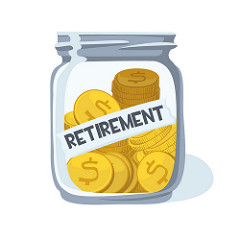Are Federal Retirees Procrastinating?

From the White House and some in Congress’ perspective, the government is overloaded with employees who should be moving toward retirement. Generally, the idea of getting a mule to move is dangling a carrot in front and simultaneously giving a good whack to the hindquarters. As entertaining as this depiction may be, that is how many older federal employees are currently being viewed.
Dating back to the Clinton administration’s government “reinvention” program up until the current administration’s President’s Management Agenda (attempting to pave the way and restructure for the fresh new future of the government), this has been a common premise behind management reforms.
There have been high hopes that such a restructure could be possible, leaving out the government’s RIF process (where older employees would still be protected regardless). The theory of the “retirement wave” was that the together the baby boomers would wash out of the government.
However, this “retirement wave” never arrived and it doesn’t appear that it will any time soon. Annual retirements have remained in the 60,000-70,000 range for a little over a decade, with the exception of the Postal Service and intelligence agencies. Nearly 15% of the federal workforce is currently eligible to retire for the same years.
This leads us back to the new focus paired with carrots and sticks.
One carrot-like incentive the government is offering is phased retirement. This is meant for those who aren’t ready to go into full retirement, but also who are ready to cut their hours and work less. At least a fifth of their working hours are to be spent as mentors to younger federal workers. It has now been six years since this went into effect and it isn’t showing much of an impact as the number of employees in this status still remains under 1,000.
Another carrot is incentive payments. This idea originated at the time of the Clinton administration and offers buyout payments (of up to $25,000) to go into retirement. Many who go this route view it as a retirement present to themselves.
For two decades the amount stayed the same, but political leaders eventually realized that the value of the incentive over time was no longer desirable. As a result, it was raised to $40,000 at the Defense Department. It appears that this higher amount could soon be offered government-wide and moving forward could be indexed for inflation.
According to recent research, date shoes that in fiscal 2015-2017 the buyout offers have fallen between 2,7000-3,900 per year, and this is out of roughly 2.1 million (still excluding the Postal Service and intelligence agencies). That averages to a little more than 1 in 1,000 employees per year.
What’s a mule rider to do if the carrot isn’t effective?
Some long-standing proposals are being pushed by the administration that could potentially encourage federal workers to leave quicker. The first one applies to workers who retired after a specific date (to be determined) whose annuities would be based on the highest consecutive five salaries rather than the high-3. The other would apply to future retirees who are retiring under FERS. It would eliminate the “special retirement supplement” that is typically paid to those retiring before age 62 and up to that age when they’re permitted to draw from Social Security.
As in the past, the chances of these ideas becoming law are slim. However, if they do come to fruition, then a rush to exit can be expected by retirement-eligible workers.








